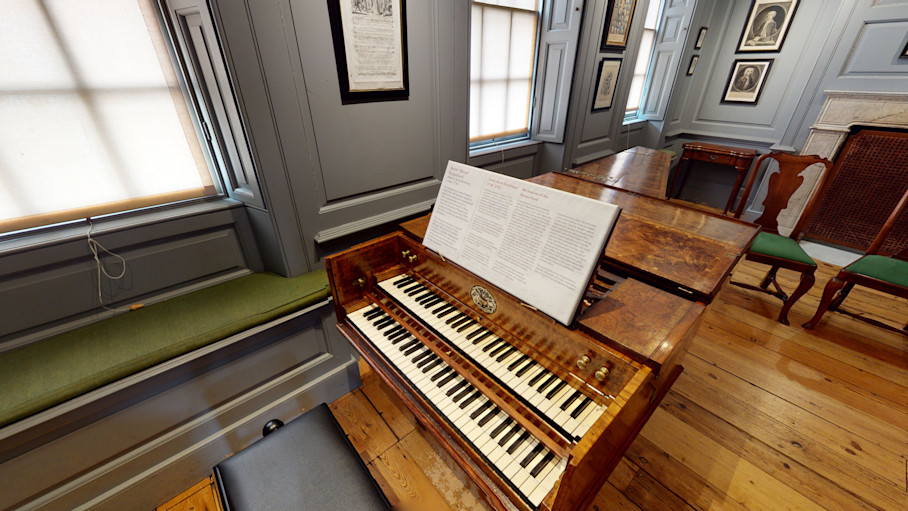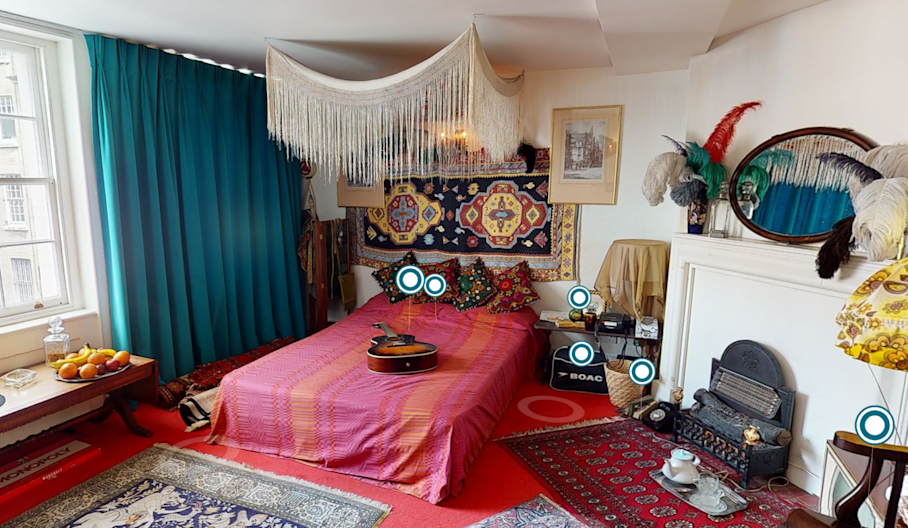Uniting Music Legends Across the Ages
Jimi Hendrix and George Frederic Handel Have Called Brook Street ‘Home’ in London
One might never have guessed that an unassuming Georgian building at 23 & 25 Brook Street in London, UK, has housed two of the most influential musical legends in history: composer George Frederic Handel and rock star Jimi Hendrix. Separated by a single wall and 200 years, this space has been the refuge and inspiration for these artists whose music will continue to delight generations to come. Today, the space has been converted into Handel & Hendrix in London, a museum with the mission to promote knowledge, awareness, and enjoyment of Brook Street’s diverse musical and cultural heritage.
One of the most well-known composers of the late Baroque era, Handel is known for his operas, oratorios and instrumental compositions. In 1741, he wrote “Messiah,” one of the most famous oratorios of all time. Much of his work was vocal and performed in the theatre, but he was also incredibly adept at composing concertos and harpsichord music.

Iconic musician Jimi Hendrix played our heartstrings in the 1960s, writing songs most of us can identify within an instant of listening – tunes like “Purple Haze” and “The Wind Cries Mary.” Pioneering the distortion of electric guitar tones that has become a characteristic rock and roll sound, Hendrix holds many accolades including induction into the Rock and Roll Hall of Fame, Billboard’s Artist of the Year, and Rolling Stone’s Performer of the Year.
We wanted to know more about the space that has housed these music icons, so we caught up with Sean Doherty, Commercial & Marketing Manager at Handel & Hendrix in London.
Q: What inspired the 3D capture of Handel & Hendrix in London?
Like any museum, gallery or music venue around the world, 2020 has been a strange and challenging year for us. When London went into its first lockdown back in March, we started looking into ways for people to experience some of the magic of our two neighbouring historic houses digitally, and a 3D capture seemed like the perfect opportunity to do that!
Q: What are the “must-sees” you want visitors to explore and why?
It’s all about the incredible coincidence that two of the most important musicians of all time – George Frideric Handel & Jimi Hendrix – happened to live next door to each other (200 years apart).

Visitors get to experience the homes of these two musical geniuses, recreated to be exactly as they were when each of them lived here. One moment you could be hearing an original harpsichord from the 18th-century being played and then you go up some stairs and you’re in the room where probably the greatest guitarist ever would write songs and listen to his record collection.

Q: What’s the one thing you want visitors to take away after exploring the former homes of these iconic musicians?
Hopefully it inspires people to discover more music by Handel & Hendrix! It’s especially satisfying to see die-hard Jimi Hendrix fans go away wanting to discover more about Handel, opera or Baroque music (as Jimi Hendrix himself did when he found out Handel lived next door). Vice-versa, we see Handel devotees go away with a new-found respect for the virtuosity and innovation that Jimi Hendrix brought to his music.
We hope that people will listen to their favourite pieces of music by Handel or Hendrix and hear them in a new or different way, having learnt about the more personal, domestic sides of our two famous residents.
Q: The Mattertags hold some great stories about Jimi Hendrix. Do you have any fun anecdotes about his flat that aren’t in the 3D tour?
Too many to write them all down here! People will just have to visit us in person whenever we reopen to the public again. One special space that’s included in the 3D tour is the spare room above Hendrix’s bedroom (which isn’t usually open to the public). This room was where Jimi’s friends would sleep over if one of the parties or jam sessions went on a bit too late. One of these people who stayed over was George Harrison of The Beatles. It’s incredible to think of these two incredible guitarists – who wrote so much of the defining music of the 1960s – hanging out, swapping stories and listening to music together in this flat.
Q: Although separated by 200 years, there are strong synchronicities between these two talented musicians: similarities in sound of the harpsichord and the electric guitar, as well as being at the center of the vibrant social and musical community. Do you think place – Brook Street – plays a hand in this?
Absolutely. For Handel, Brook Street was an ideal location as it was close enough to both the opera theatres in Covent Garden and the Royal Palaces in Kensington where he performed and taught music. The same goes for Hendrix who was walking distance from the clubs and venues where he would often go for impromptu blues jams. The difference was that at Handel’s time Brook Street was almost on the outskirts of the city whereas by Hendrix’s time it was right in the centre (as it is today).
Q: The museum is closed at this time due to the coronavirus pandemic. How are you handling the uncertainty?
It’s definitely been a strange year but we’re lucky that we’ve been able to create some interesting digital projects like the 3D tour. Nothing beats the real experience of visiting the museum or coming to one of our events in person though, so we can’t wait to have live music and people back inside the house again soon.
To learn more about the history of 23 & 25 Brook Street in London, check out the Handel & Hendrix website or follow us on Facebook, Twitter, YouTube, and Instagram.
